Mountain Rescue
Joining Mountain Rescue isn't easy - but the hard work and dedication earns a spot on an essential team in the UK countryside.
Mountain Rescue
https://contoursrun.co.uk/mountain-rescue
by Karen Simons
Images of today's Mountain Rescue team kindly provided by Penrith Mountain Rescue.
Many years ago, I moved to the Lake District and started up Contours, first as a guided walking holiday company, and in later times, the self-guided holiday company that we run today.
At the time I felt relatively fit, enjoyed the outdoors — in particular walking and climbing — and wanted to put something back into the local community.
My dear friend Dave and I, with our three dogs, started to talk about joining Mountain Rescue as we went on our daily walks onto the fells.
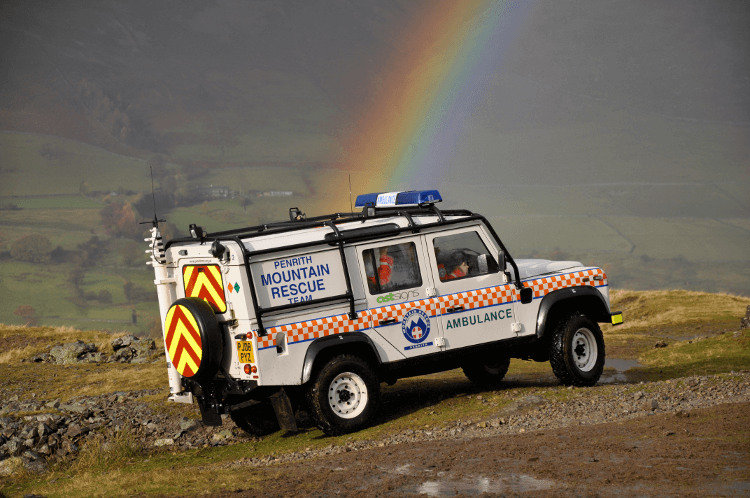
Dave was already a Park Ranger, along with being a radio operator on submarines in his youth. His dog was a well-behaved collie, whilst my two were a belligerent heeler and an overactive Jack Russell. This meant he had a bit more to offer than I did, but I was very enthusiastic. Dave was some twenty years older than I was and I knew he had great stamina, so I made sure that I could match him, even when it nearly killed me.
As we diligently did day after day of our own training programme to offer ourselves up in the best possible light, we thought that we were well prepared — in fact, we thought it was a done deal that we would secure our places on the team and get straight out there to help people.
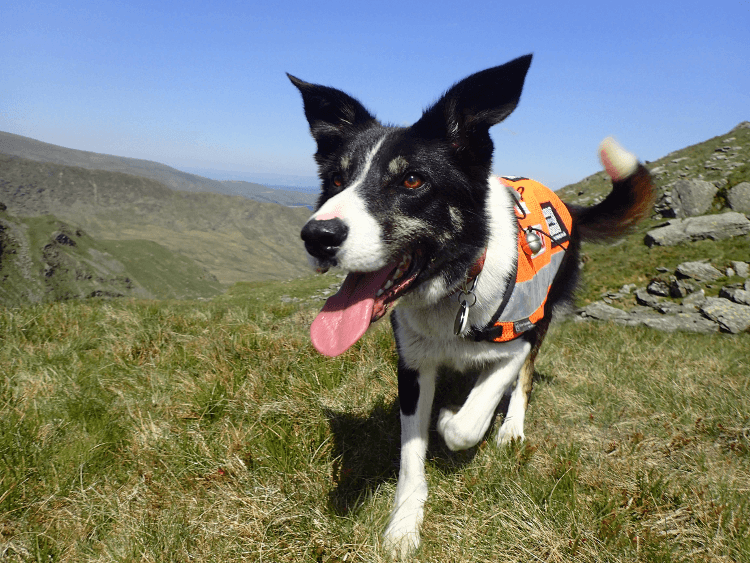
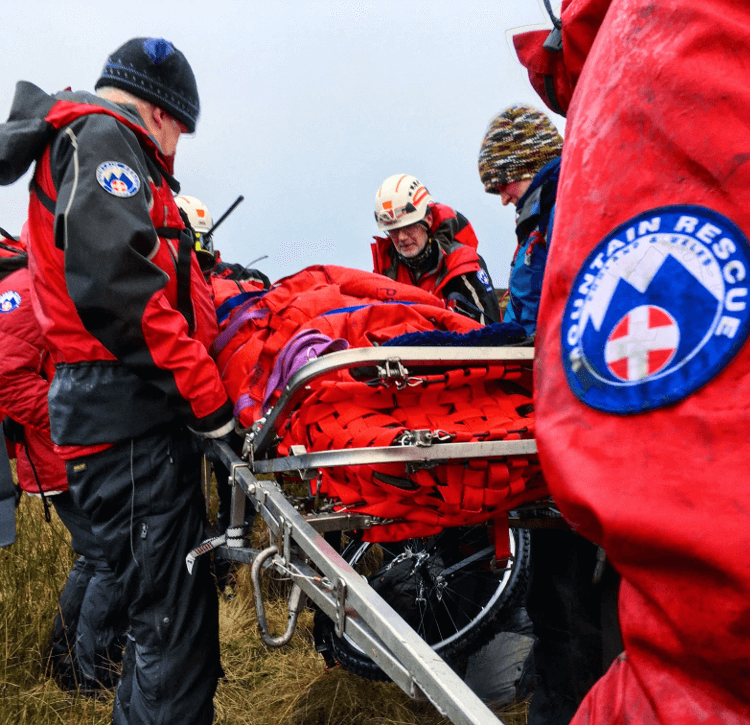
But when we turned up at the base, the entrance criteria were much harder than we had thought they would be. It was not just about how useful you could be as a team member, but how committed you were to the training and the fundraising events that were tantamount to keeping the volunteer service going.
Training was every Tuesday night and most weekends. There were first-aid courses with exams, day and night navigation lessons, climbing and safety instruction, specialist driving and helicopter training, winter skills in Scotland once a year, and then my pet hate: the mines.
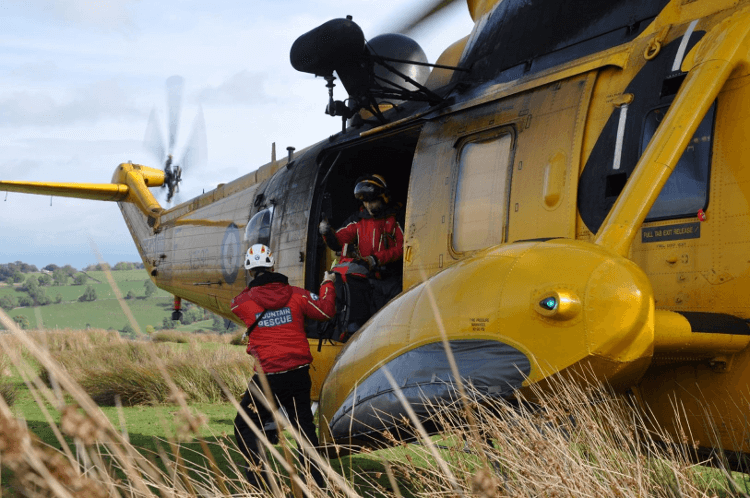
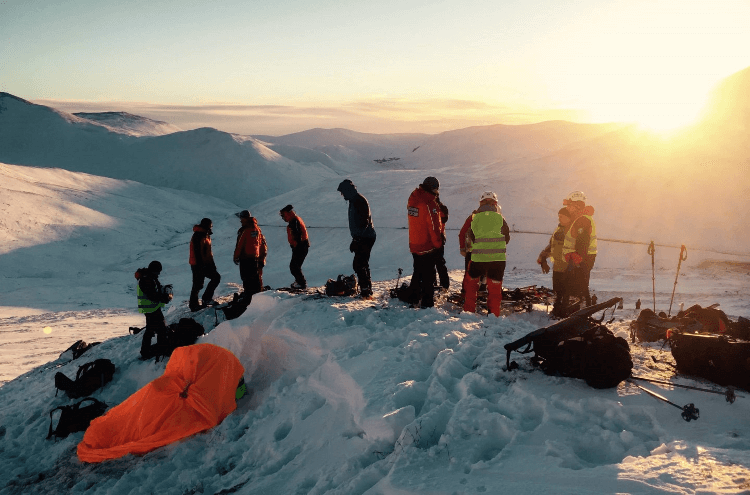
We had joined Penrith Mountain Rescue, which covered the North East Lakes, Eden Valley and the Pennines up to the Scottish borders. Sitting within this area was a myriad of old mines, some of which were still used by the strange breed of folk who enjoyed a day in the dark and wet and others who seemed to be drawn to them as a great hiding place.
But I’ll get back to the mines later; we did not dwell on them as we started our initiation. Dave, I feel, got off a lot lighter than I did, as our first evening out still haunts me.
It was dark in the Lakes when we were dropped at the foot of a hill. I was teamed up with two chaps who seemed to be in running gear, whilst I was heavily wrapped up against the cold. We were to be the initial search party, and the two chaps set off at a jog which they easily kept up as we climbed ever upwards.
I couldn’t believe it; they quickly disappeared into the night. But somehow I panted my way to the top before collapsing at their feet.
‘What is your name?’ they asked, and I found I couldn’t speak. ‘Karen,’ I eventually squeaked, thinking they might want to congratulate me, only to be told, ‘Right, onto the next hill, Karen.’
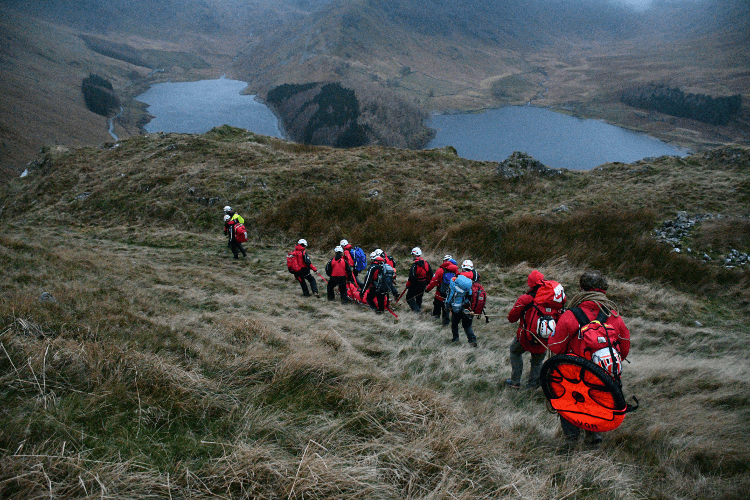
Somehow I was accepted, and Dave and I began to find our own little niches.
Dave was soon the communications officer and I, being small and light, was often put on the stretcher as guide or sent down the narrowest of holes, which meant back to the mines.
I dreaded being called out to the mining rescues, knowing that it would involve hours crawling around on my belly in damp and cold conditions, especially as Dave was tasked with manning the special radio above ground! These were the early days, and the mine enthusiasts formed their own specialist team, Cumbria Ore Mines Rescue Unit (COMRU) as part of the bigger Mountain Rescue family sometime later.

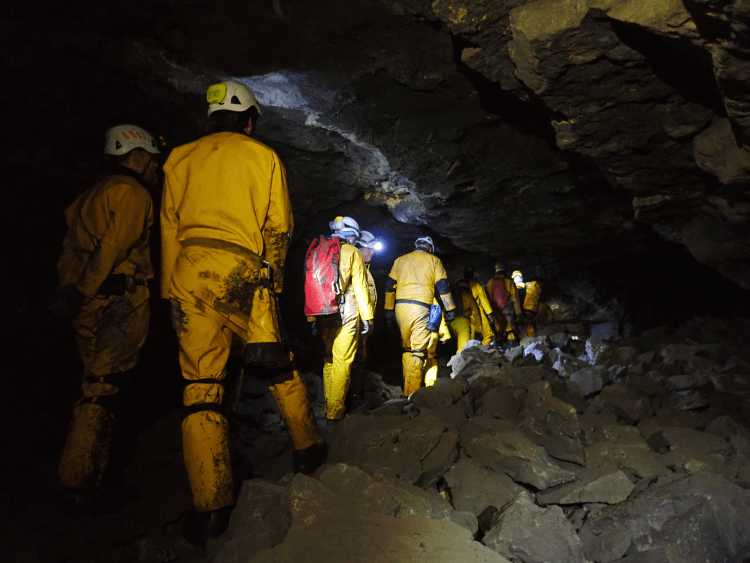
Despite the mines, I have such fond memories of the ten years with the rescue team, from helping farmers with stranded sheep, which would nimbly hop off the ledge the moment you were lowered down to them, to being part of a real-life rescue on a film set in Aviemore whilst on winter training. The alarm went up and all the lads disappeared for their moment of fame, whilst I realised I was the only one left to traipse through the snow carrying the stretcher.
I loved the ability to help find someone or provide comfort during an accident, and the amazing teamwork that drove Mountain Rescue. There was a lot that went on in the background to ensure a professional and seamless service and all of it was voluntary.
We were provided with our standard kit, but a lot had to be purchased yourself to ensure you were safe and warm (or cold in the summer) when on the hills or, of course, down a hole.
Mountain Rescue is a charity and is run entirely on donations. Many people that we helped over the years gave generously, and we were sponsored by local companies.
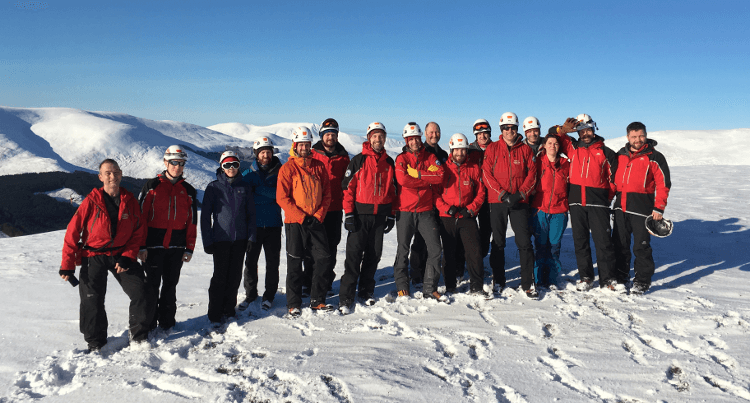
Here at Contours, we have yearly training days to help our staff understand what it means to alert Mountain Rescue. The more information you can give them the better: details of the injury and the person(s) involved, and as accurate as possible location for a rescue. For the search team, knowing who they are looking for, your likely route, and the conditions they face is invaluable.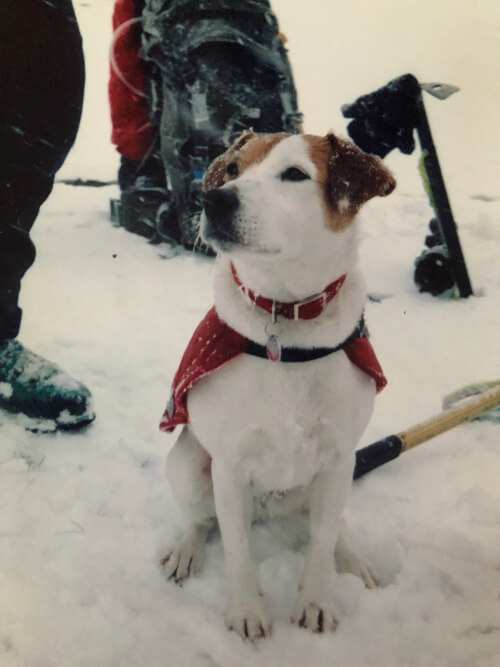
It is safe to say that anyone can get lost or injured, as Richard, who works in customer services, testifies in his first-hand account.
But first, what about our dogs?
Well, Dave’s collie Tarn (as you can see, another plus: having the right name) was a great asset.
My two, Pip and Wooster, were useless — apart from gathering some sympathy when we were out collecting for the team.